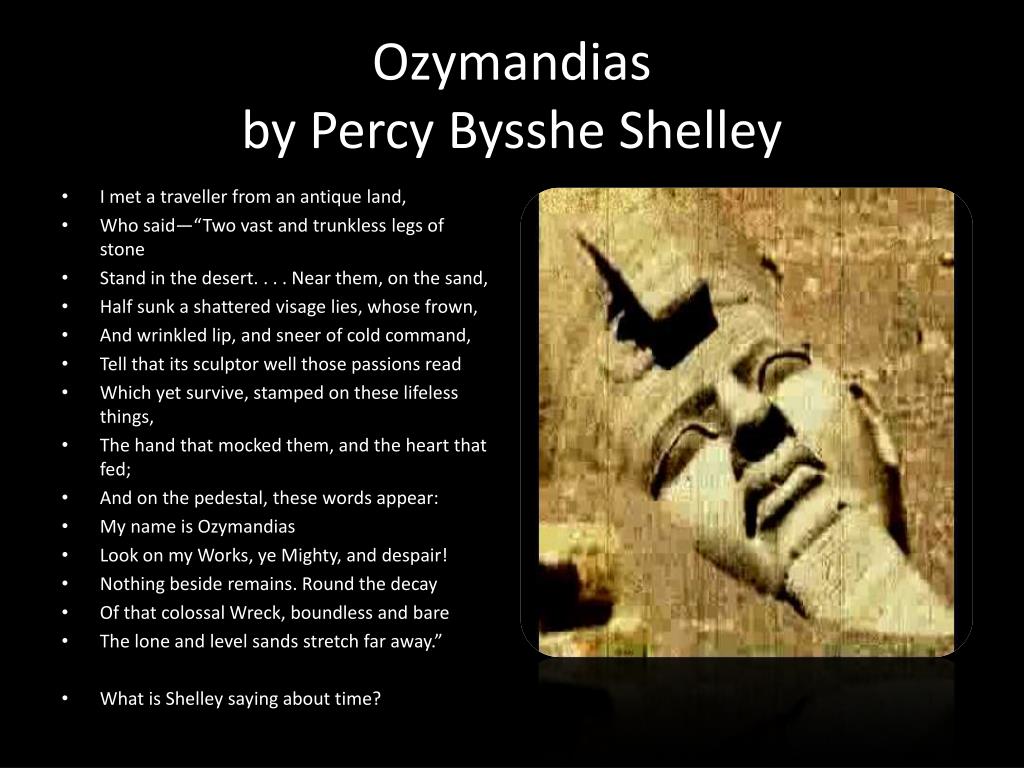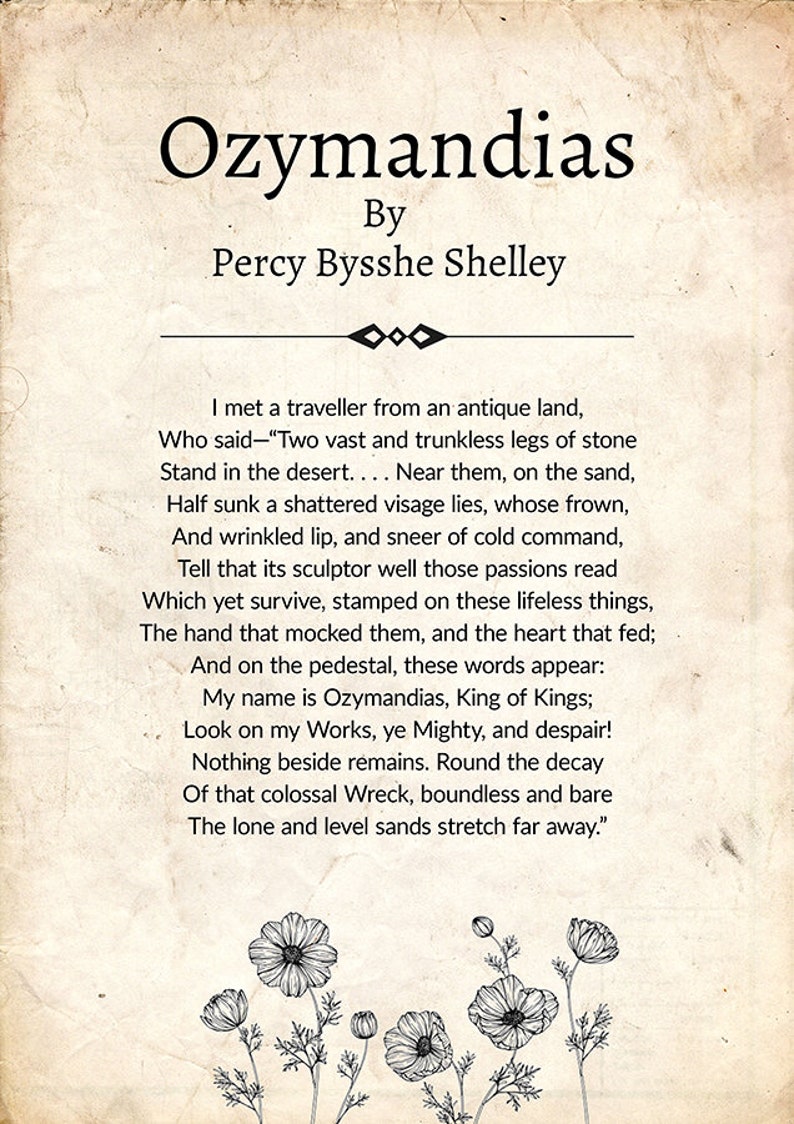
Smith is using the word generically to represent a great and ancient city. It was one of the great cities of antiquity and at two different periods was the largest city in the world. Ozymandias - Smith initially titled his poem the same as Shelley’s later, he re-titled it “OnĪ Stupendous Leg of Granite, Discovered Standing by Itself in the Deserts of Egypt, with the Inscriptionīabylon - The name of the famous city on the Euphrates River in Mesopotamia. Little of Pi-Ramesses Aa-nakhtu survives, but as you can see in the pictures above, the statue does not actually stand by itself in the desert. Both Shelley and Smith were responding to a drawing of the statue that did not include all of the background. But Smith later changed his title to On A Stupendous Leg of. Lone and level sands - This is not quite accurate. Percy Shelley wrote competing sonnets with his friend, Horace Smith, both called Ozymandias. Note that Shelley is using this verb in a transitive way. If anyone would know how great I am and where I lie, let him surpass one of my works.” The title Ozymandias refers to an alternate name of the ancient Egyptian pharaoh Ramses II. It may also be a literary reference to Diodorus Siculus, an ancient Greek historian (he was from Sicily, which was ethnically and culturally Greek at the time), who wrote in his massive forty-volume Biblioteca Historica that Rameses’ statue bore the inscription “King of Kings am I, Ozymandias. Traveller - This is a bit of poetic license, as no such traveller existed. To make the competition fair, both poems were published anonymously because Shelley was much better known as a poet. Both were published in Leigh Hunt’s weekly magazine The Examiner a few weeks apart in January 1818. The archeological discovery of this city and the broken statue inspired Shelley and Smith to write these sonnets in a friendly competition. Ozymandias remains one of the best-crafted sonnets, as much for its vivid description as for the breadth and depth of its meaning.
Ozymandias sonnet full#
He also engaged in a major building program, which involved temples, palaces, and even a whole new capital city, Pi-Rameses Aa-nakhtu. How much meaning is crammed into those fourteen lines A master like Shelley unlocks the full potential of the sonnet, showing the form’s power and versatility in its full glory. During his rule (1279-1213 B.C.E.), Egypt became the dominant military power in the region. Rameses was one of the greatest rulers of the ancient world. Ozymandias - A Greek name for the great Egyptian pharaoh Rameses II, also called the Great (c. The lone and level sands stretch far away. Of that colossal wreck, boundless and bare He meets some fragment huge, and stops to guess Look on my works, ye Mighty, and despair! Wonder like ours, when through the wilderness



The hand that mocked them, and the heart that fed Which yet survive, stamped on these lifeless things, The wonders of my hand. The citys gone! Tell that its sculptor well those passions read A sonnet is a fourteen-line poem, whose ideal form is often attributed to the great Italian poet Petrarch. I am great Ozymandias, saith the stone,Īnd wrinkled lip, and sneer of cold command, Ozymandias takes the form of a sonnet in iambic pentameter. Half sunk, a shattered visage lies, whose frown, Stands a gigantic Leg, which far off throws Who said: Two vast and trunkless legs of stone Of Rameses the Great inspired the following sonnets in 1817:


 0 kommentar(er)
0 kommentar(er)
